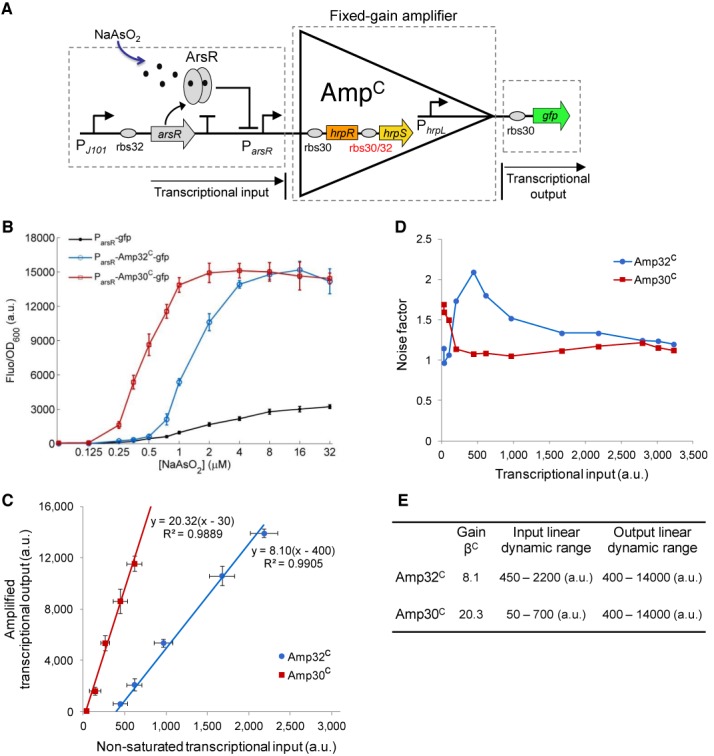Figure 2.

Engineering and characterization of the fixed-gain amplifiers Amp32C and Amp30C. (A) The fixed-gain transcriptional amplifier comprises two terminals corresponding to the signal input and signal output. Here two amplifiers with different gains, Amp32C and Amp30C, are designed by using two different RBS sequences ahead of the hrpS gene. An arsenic responsive sensor is the input signal and gfp the output. (B) Steady state responses of the arsenic sensor without amplification and with amplification by Amp32C and Amp30C. The cells are induced by 12 varying concentrations of arsenite (0, 0.125, 0.25, 0.35, 0.5, 0.75, 1.0, 2.0, 4.0, 8.0, 16, 32 μM NaAsO2). (C) The scatter plot shows the linear relationships between the non-saturated transcriptional inputs (the signal inputs that do not lead to maximum output level of the device) and the amplified outputs of Amp32C and Amp30C by fitting to a linear function. (D) Device noise characteristics of Amp32C and Amp30C. (E) Performance characteristics summary of the two amplifiers. Data shown in these figures are means and s.d. for three replicates performed on different days.
